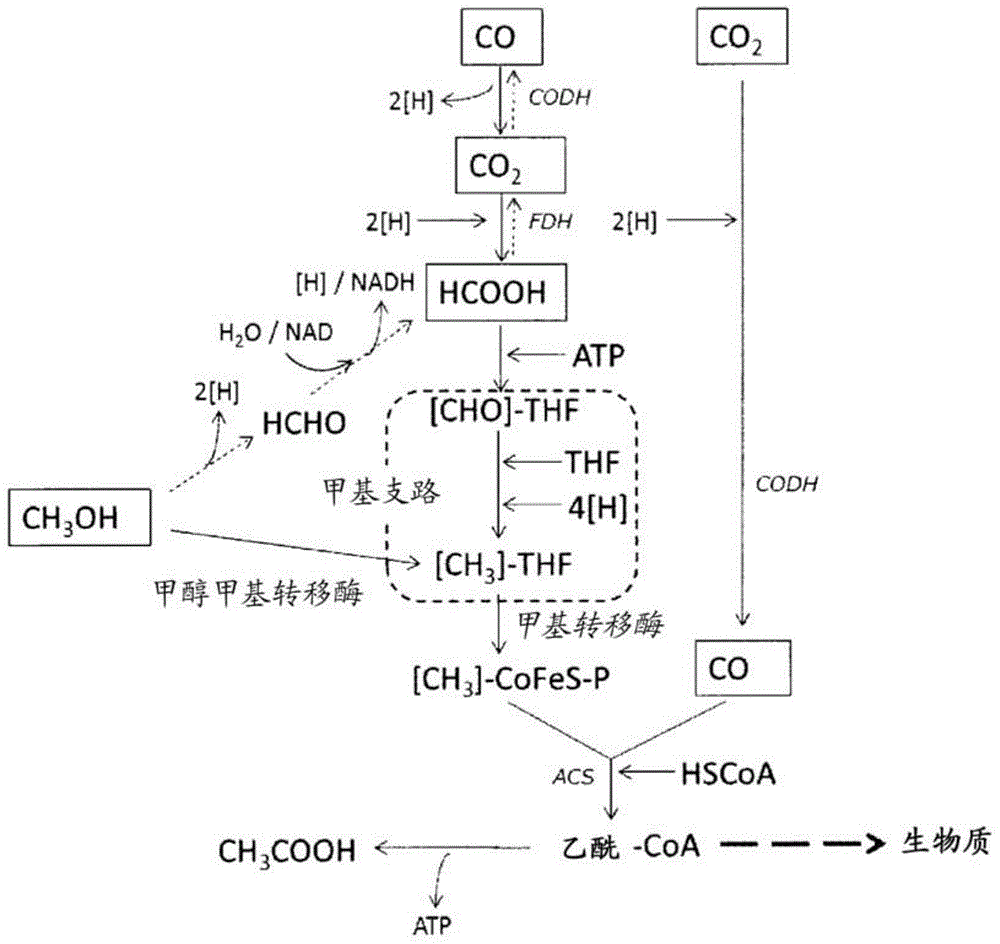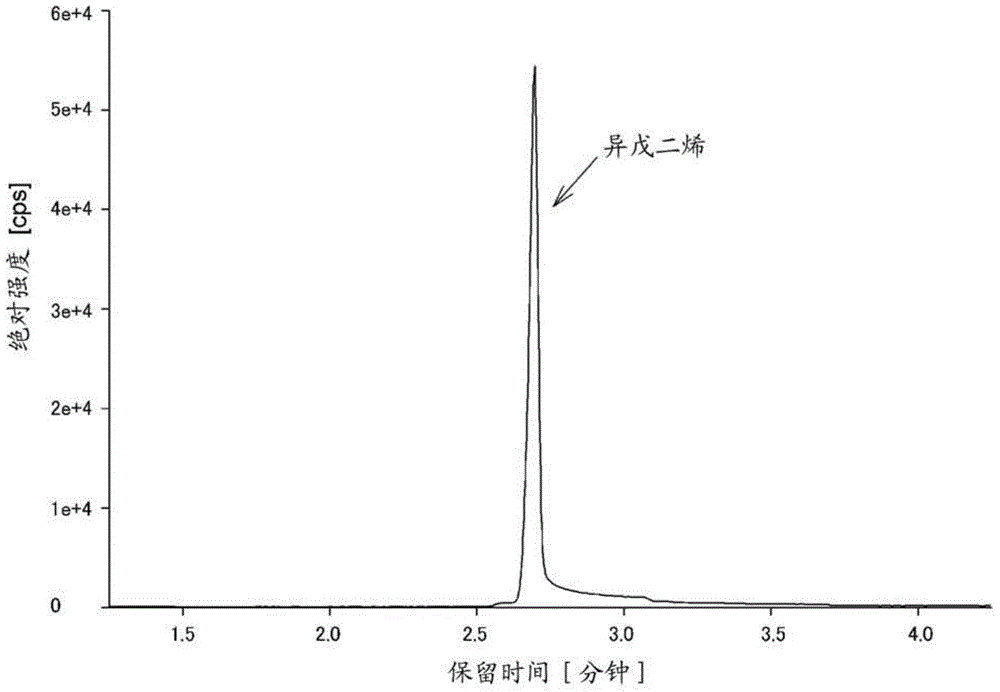Recombinant cell and production method for isoprene
一种重组细胞、异戊二烯的技术,应用在生物化学设备和方法、重组DNA技术、细菌等方向,能够解决不生产异戊二烯等问题
- Summary
- Abstract
- Description
- Claims
- Application Information
AI Technical Summary
Problems solved by technology
Method used
Image
Examples
Embodiment 1
[0134] (1) Isolation of poplar-derived isoprene synthase gene and construction of expression vector
[0135] Using the total RNA derived from the leaves of poplar (Populus nigra) as a template, by RT-PCR using the primers represented by SEQ ID NO: 3 and SEQ ID NO: 4, the coding poplar-derived isoprene synthase ( IspS) nucleic acid (IspS gene from poplar, sequence number 1, gene bank accession number: AM410988.1) was amplified. The obtained amplified DNA fragment was cloned into pT7-Blue T vector (TAKARA BIO INC.) to construct pT7IS.
[0136] On the other hand, SEQ ID NO: 5 and SEQ ID NO: 6 were introduced into the BamHI / EcoRI site of the Clostridium / Escherichia coli (E. coli) shuttle vector pIMP1 (Mermelstein LD et al., Bio / technology 1992, 10, 190-195) The indicated synthetic DNA was modified to construct pIM1A by modifying the cloning site. Furthermore, synthetic DNAs represented by SEQ ID NO: 7 and SEQ ID NO: 8 were introduced into the PstI / BamHI site of pIM1A to construc...
Embodiment 2
[0146] (1) Construction of expression vector incorporating mevalonate pathway enzyme gene and isoprene synthase gene
[0147] Using the genomic DNA of Streptomyces griseolosporeus (Kitasatospora griseola) as a template, PCR using the primers represented by SEQ ID NO: 10 and SEQ ID NO: 11 was used to detect the methylol gene encoding S. griseolosporeus. Nucleic acid (SEQ ID NO: 9) of pentanoate pathway enzyme was amplified. The nucleic acid contains codes for mevalonate kinase, mevalonate diphosphate decarboxylase, phosphomevalonate kinase, IPP isomerase, HMG-CoA (3-hydroxy-3-methylglutaryl coenzyme A) Gene cluster for reductase (HMGR), and HMG-CoA synthetase. The obtained amplified DNA fragment was cloned into pT7-Blue T vector to construct pT7SMV.
[0148] On the other hand, using the pT7IS prepared in Example 1 as a template, a DNA fragment containing the poplar-derived IspS gene was amplified using the primers represented by SEQ ID NO: 3 and SEQ ID NO: 12. This DNA fragm...
Embodiment 3
[0160] (1) Construction of an expression vector incorporating the codon-changed isopentenyl diphosphate isomerase (IDI) gene and isoprene synthase (IspS) gene
[0161] In this example, it was attempted to use Yondal's Escherichia coli-derived isopentenyl diphosphate isomerase (IDI) gene and poplar-derived isoprene synthase (IspS) gene introduced with codon changes. Clostridium to produce isoprene. For codon changes, refer to the codon usage table of Clostridium kluyveri (DSM 555) (http: / / www.kazusa.or.jp / codon / cgi-bin / spsearch.cgi?species=clostridium&c= i).
[0162] A codon-changed IDI-IspS operon synthetic gene (SEQ ID NO. 15, represented by the sense strand) was introduced into the PstI / BamHI site of pIM1A produced in Example 1 to construct the expression vector pIMAIS1. Using the same method, the expression vector pIMAIS2, which introduced the IDI-IspS operon synthetic gene without codon change, was also constructed.
[0163] It should be noted that in SEQ ID NO: 15, the...
PUM
 Login to View More
Login to View More Abstract
Description
Claims
Application Information
 Login to View More
Login to View More - R&D Engineer
- R&D Manager
- IP Professional
- Industry Leading Data Capabilities
- Powerful AI technology
- Patent DNA Extraction
Browse by: Latest US Patents, China's latest patents, Technical Efficacy Thesaurus, Application Domain, Technology Topic, Popular Technical Reports.
© 2024 PatSnap. All rights reserved.Legal|Privacy policy|Modern Slavery Act Transparency Statement|Sitemap|About US| Contact US: help@patsnap.com










